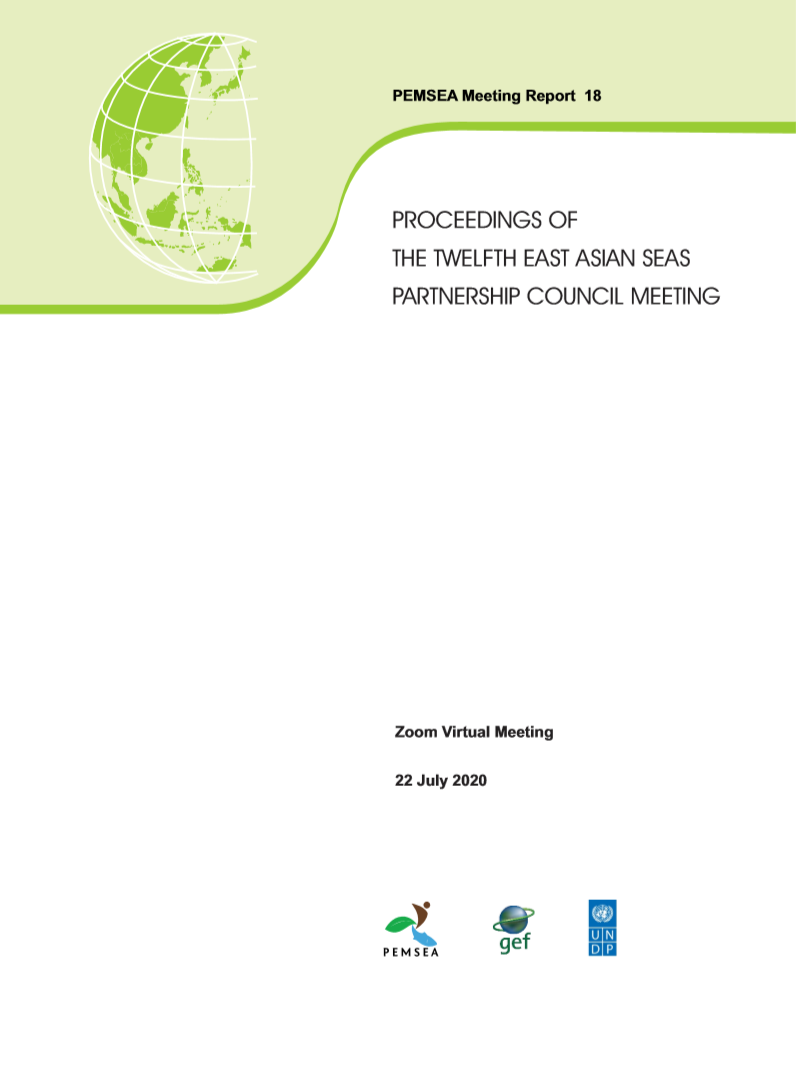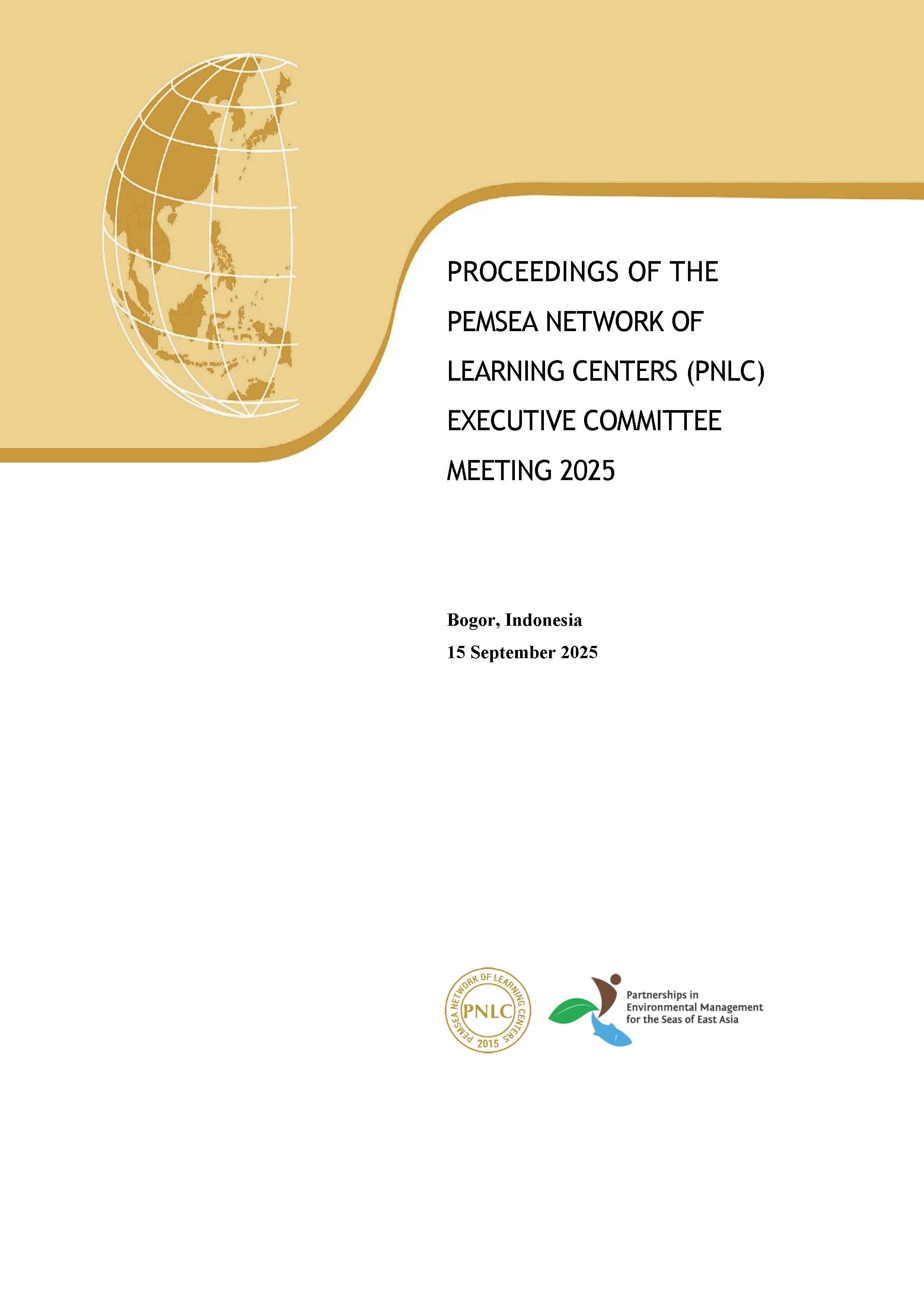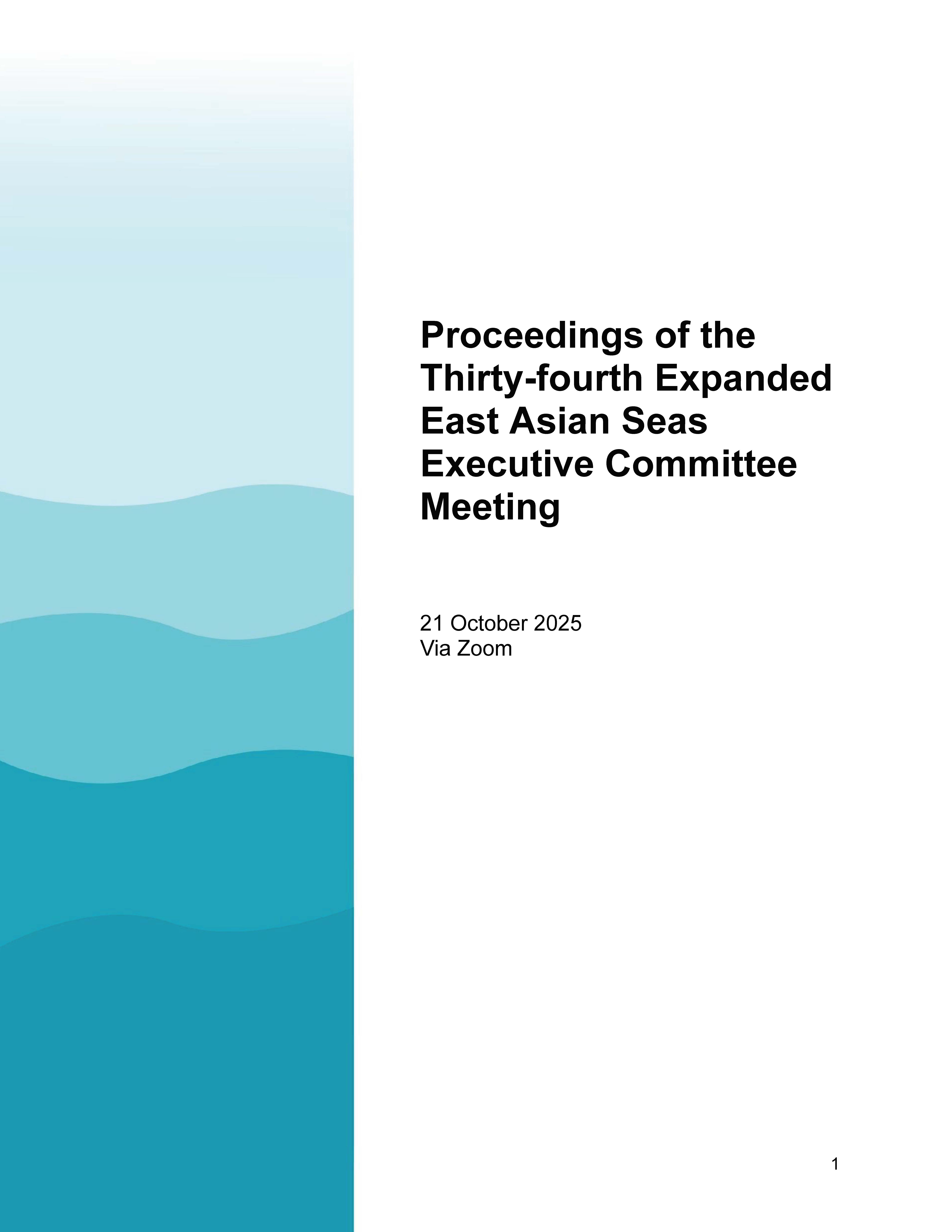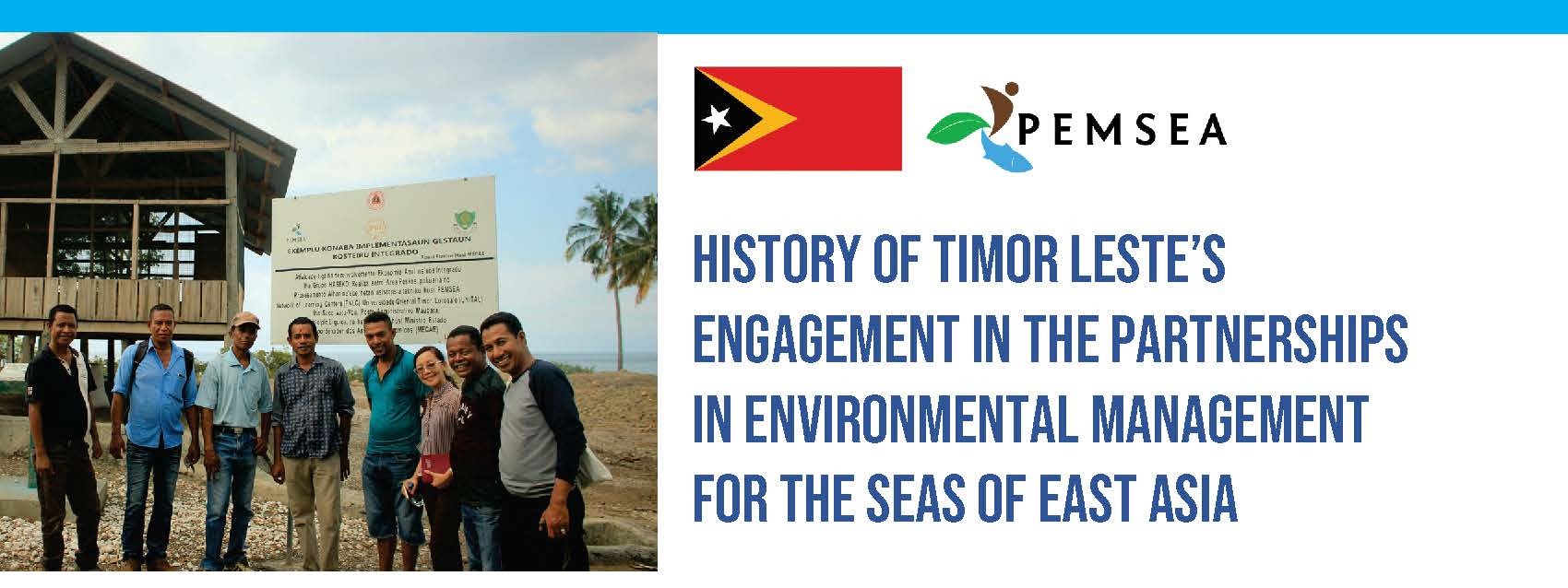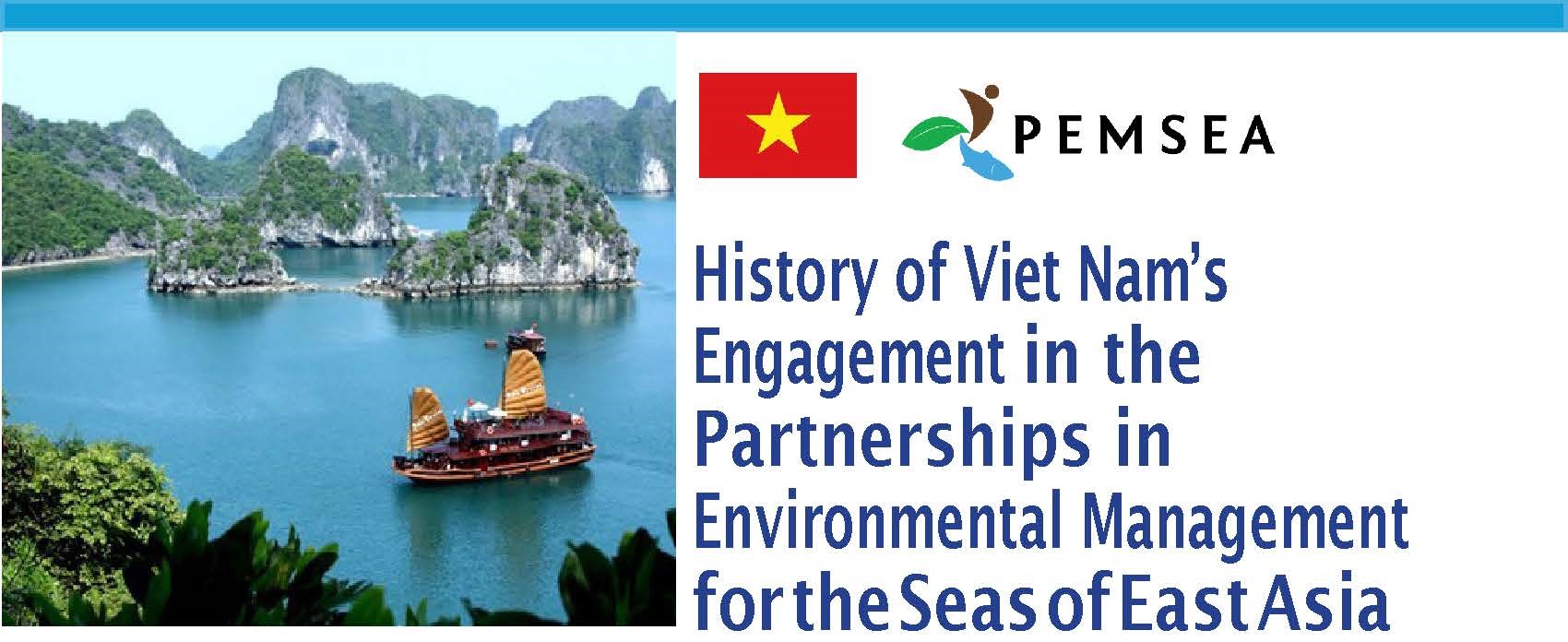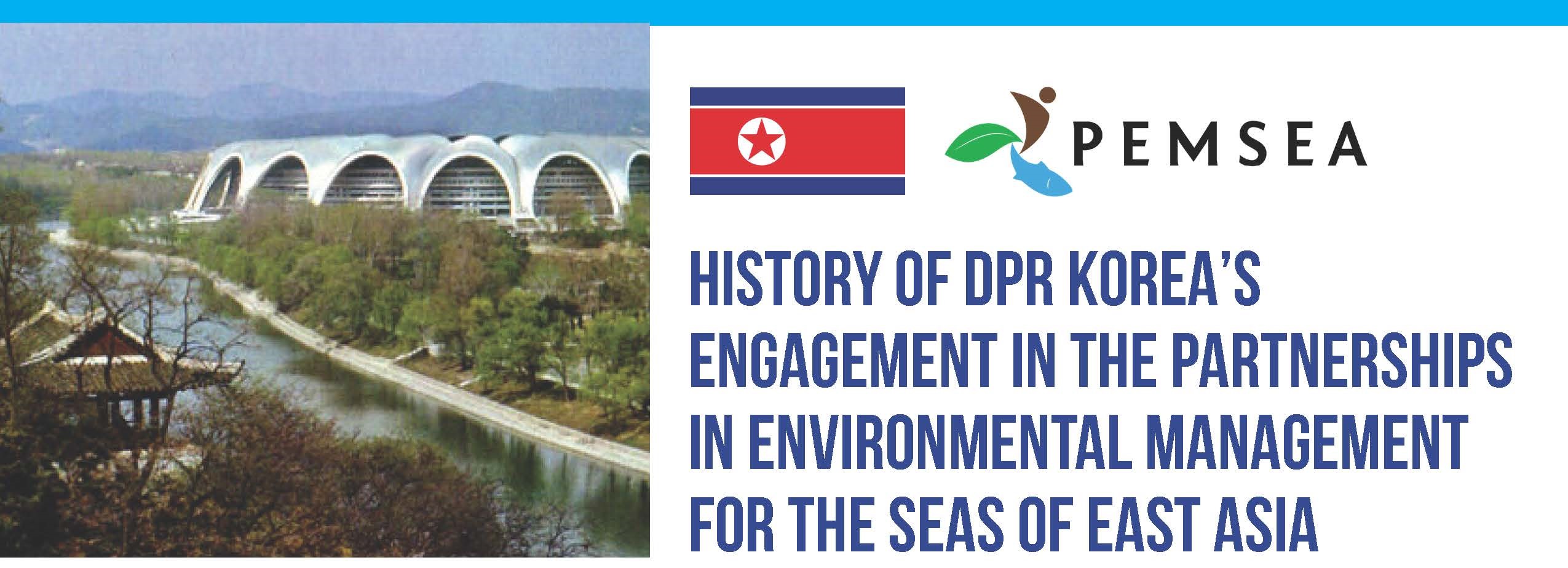
Breadcrumb
Proceedings of the Twelfth East Asian Seas Partnership Council Meeting
PUBLICATION DATE:
Friday, August 14, 2020
PUBLICATION TYPE:
Meeting Documents
STATUS:
Only Available Online
DESCRIPTION:
The 12th East Asian Seas (EAS) Partnership Council Meeting was held virtually through a zoom video conference call on 22 July 2020. The Meeting was attended by representatives from ten PEMSEA Country Partners namely: Cambodia, China, Indonesia, Japan, Lao PDR, Philippines, RO Korea, Singapore, Timor Leste, and Vietnam. Representatives from PEMSEA Non-Country Partners were also in attendance, namely: ASEAN Biodiversity Center (ACB); International Environmental Management of Enclosed Coastal Seas Center (EMECS); International Union for Conservation of Nature – Asia Regional Office (IUCN); Korea Marine Environment Management Corporation (KOEM); Marine Biodiversity Institute of Korea (MABIK);Northwest Pacific Action Plan (NOWPAP); Ocean Policy Research Institute – The Sasakawa Peace Foundation (OPRI-SPF); Oil Spill Response Limited (OSRL); Plymouth Marine Laboratory (PML); PEMSEA Network of Local Governments for Sustainable Coastal Development (PNLG) Secretariat; UNDP/GEF Yellow Sea LME Project II (YSLME). Representatives from China PEMSEA Center and the United Nations Development Programme (UNDP) Philippines participated as observers. The PEMSEA Resource Facility (PRF) served as the Secretariat for the meeting.
| DOCUMENT NUMBER | DOCUMENT TITLE |
|---|---|
| PC/20/DOC/01a | List of Documents |
| PC/20/DOC/01b | List of Participants |
| PC/20/DOC/01c | Council and Technical Session Provisional Agenda |
| PC/20/DOC/01d | Council and Technical Session Annotated Agenda |
| PC/20/DOC/02 | Summary of Recommendations and Decisions of the 11th EAS Partnership Council (July 2019) and the 23rd Executive Committee Meeting (April 2019) and 24th Executive Committee (April 2020), Status of Actions Taken |
| PC/20/DOC/03 | Report of the Council Chair |
| PC/20/DOC/04 | Report of the Executive Director |
| PC/20/DOC/05 | Inclusion of NIVA as New PEMSEA Non-Country Partner |
| PC/20/DOC/06a | Designation of PEMSEA’s Regional Center for Excellence: COMI |
| PC/20/DOC/06b | Annex 1. Selected Papers of COMI 2014 – 2018 |
| PC/20/DOC/6c | Annex 2. Selected Research Projects |
| PC/20/DOC/6d | Annex 3. Training Programs |
| PC/20/DOC/6e | Annex 4. External Review Summary COMI |
| PC/20/DOC/07 | Mid-term Review of the SDS-SEA Implementation Plan (2018-2022) |
| PC/20/DOC/08 | EAS Congress 2021 |
| PC/20/DOC/09a | UNDP/GEF Scaling Up SDS-SEA |
| PC/20/DOC/09b | UNDP/GEF ATSEA-2 |
| PC/20/DOC/09c | ASEANO Marine pollution Capacity Building project |
| PC/20/DOC/09d | UNDP/GEF IRBM (project in the pipeline) |
| PC/20/DOC/09e | Blue solutions for reducing maritime transport GHG emissions through increased energy efficiency of ship and port activities in East Asia |
| PC/20/DOC/10a | Intergovernmental Session Provisional Agenda |
| PC/20/DOC/10b | Intergovernmental Session Annotated Agenda |
| PC/20/DOC/11a | COVID-19 and its implications on PEMSEA’s Post-2020 Sustainability Plans |
| PC/20/DOC/11b | Annex A. Country Measures Against COVID-19 |
| PC/20/DOC/11c | Annex B. Impacts of COVID-19 on Project Implementation |
| PC/20/DOC/11d | Annex C. PEMSEA’s Current and Pipeline Projects |
| PC/20/DOC/11e | Annex D. Best Case Scenario Sources of Revenues and Forecast Budget Expenditure for 2021 |
| PC/20/DOC/11f | Annex E. Initial Topics PEMSEA can focus on in 2021 and beyond |
| PC/20/DOC/12a | Selection and Appointment of PRF Executive Director 2021-2023 |
| PC/20/DOC/12b | Annex 1. PEMSEA Rules of Governance Annex 4 – Selection and Appointment of the PRF Executive Director |
| PC/20/DOC/12c | Annex 2. PEMSEA Rules of Governance Annex 11 – Revised Terms of Reference of the Executive Committee |
| PC/20/DOC/12d | Annex 3. Brief Timeline on Recruitment of Previous PRF Executive Directors |
| PC/20/DOC/12e | Annex 4. Terms of Reference of the ED from the PRF Re-engineering Plan |
| PC/20/DOC/12f | Annex 5. PEMSEA Annual Report 2018 |
| PC/20/DOC/12g | Annex 6. Executive Director’s Reflection 2018 |
| PC/20/DOC/12h | Annex 7. Report of the Executive Director 2018 |
| PC/20/DOC/12i | Annex 8. PEMSEA Annual Report 2019 |
| PC/20/DOC/12j | Annex 9. Endorsement from the Department of Environment and Natural Resources (DENR), Philippines |
| PC/20/DOC/13 | PEMSEA Corporate Work Plan and Budget 2020 and 2021 |
RELATED PUBLICATIONS
PEMSEA NETWORK OF LEARNING CENTERS (PNLC) 2025 Executive Committee Meeting Proceedings
The 2025 PNLC Executive Committee (PNLC EC) Meeting was organized by PNLC Secretariat on 15 September 2025 in Bogor, Indonesia. It was participated by Prof. Yonvitner of the Center for Coastal and Marine Resources Studies of the IPB University (CCMRS-IPB) and President of the PNLC, Dr. Fang Qinhua, Deputy Director of the Coastal and Ocean Management Institute of Xiamen University (COMI-XU) and Vice-President of the PNLC, and Ms. Aimee T. Gonzales, PEMSEA Resource Facility (PRF) Executive Director as members of the PNLC Executive Committee. Ms. Isdahartatie PNLC secretariat Coordinator/ CCMRS-IPB University, Ms. Nancy Bermas from PRF, Francesca Cortez (PRF Secretariat Assistant) and Lusita Meilana, PNLC Secretariat staff. The meeting was chaired by Prof. Yonvitner. Ms. Isdahartati served as the Secretariat of the meeting.
The following supporting documents are annexed to these proceedings:
- Annex 1: Meeting Agenda / Program
- Annex 2: Links to the meeting documents, presentation and photos
- Annex 3: List of participants
Proceedings of the Thirty-fourth Expanded East Asian Seas Executive Committee Meeting
The Expanded East Asian Seas (EAS) Executive Committee convened its 34th Executive Committee Meeting on 21 October 2025 online via Zoom. The meeting was attended by EAS Partnership Council Chair Attorney Jonas Leones; Intergovernmental Session Chair Mr. Le Dai Thang; Intergovernmental Session Co-Chair Dr. Xinwei Yu; Technical Session Chair Dr. Suk-Jae Kwon; and Technical Session Co-Chair Dr. Wakita Kazumi. The PEMSEA Resource Facility (PRF), led by Executive Director (ED) Ms. Aimee T. Gonzales, served as Secretariat to the meeting. PEMSEA Country Partners in attendance included national focal points and representatives from Cambodia, China, Indonesia, Japan, Lao PDR, the Philippines, the Republic of Korea, Singapore, Timor-Leste, and Viet Nam. Non-Country Partners present included representatives from the ASEAN Centre for Biodiversity, Ipieca GISEA, Oil Spill Response Limited, National Marine Hazard Mitigation Service, International Center for Environmental Management of Enclosed Coastal Seas (EMECS), PEMSEA Network of Local Governments, and Korea Institute of Ocean Science & Technology, among others. Online observers included staff from the PEMSEA Resource Facility and UNDP.
History of Timor Leste's engagement in PEMSEA
Since joining PEMSEA in 2006 through the signing of the Haikou Partnership Agreement, Timor-Leste has made remarkable progress in advancing sustainable coastal and ocean governance under the Sustainable Development Strategy for the Seas of East Asia (SDS-SEA). Over the years, the country has implemented Integrated Coastal Management (ICM) programs in key municipalities, developed national ocean and coastal policies, and strengthened inter-agency collaboration for marine protection and livelihood enhancement. Through its participation in regional initiatives such as ATSEA and the Marine Plastics ODA Project, Timor-Leste continues to demonstrate strong commitment to ecosystem-based management, blue economy development, and regional cooperation for healthy and resilient seas.
History of Viet Nam's engagement in PEMSEA
Since 1993, Viet Nam has been an active partner in advancing sustainable coastal and ocean governance in the East Asian Seas through PEMSEA. From pioneering Integrated Coastal Management (ICM) in Da Nang to establishing the Viet Nam Administration of Seas and Islands (VASI), the country has institutionalized ICM in national policy and legislation while fostering regional cooperation through leadership roles in PEMSEA bodies and ministerial forums. Viet Nam’s consistent participation in key initiatives and adoption of major regional declarations underscore its strong commitment to blue economy development, marine ecosystem protection, and the long-term implementation of the Sustainable Development Strategy for the Seas of East Asia (SDS-SEA).
History of DPR Korea's Engagement in PEMSEA
Since joining the regional GEF/UNDP/IMO Marine Pollution Prevention in the East Asian Seas (MPP-EAS) project, the DPR Korea has actively advanced Integrated Coastal Management (ICM) through the establishment of the Nampho demonstration site and the National ICM Training Center at Kim Il Sung University. The country has consistently participated in key regional forums, including the East Asian Seas Congresses and Ministerial Forums, adopting major regional declarations and frameworks such as the SDS-SEA and Manila Declaration. Its engagement reflects a sustained commitment to regional cooperation, marine pollution prevention, and sustainable coastal development under PEMSEA.
